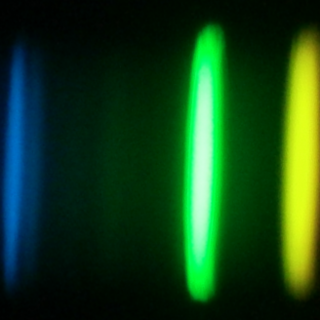Bibcode
Cunha, K.a; Smith, Verne V.; Hasselquist, Sten; Souto, Diogo; Shetrone, Matthew D.; Allende Prieto, C.; Bizyaev, Dmitry; Frinchaboy, Peter; García-Hernández, D. A.; Holtzman, Jon; Johnson, Jennifer A.; Jőnsson, H.; Majewski, Steven R.; Mészáros, Szabolcs; Nidever, David; Pinsonneault, Mark; Schiavon, Ricardo P.; Sobeck, Jennifer; Skrutskie, Michael F.; Zamora, O.; Zasowski, Gail; Fernández-Trincado, J. G.
Bibliographical reference
The Astrophysical Journal, Volume 844, Issue 2, article id. 145, 12 pp. (2017).
Advertised on:
8
2017
Journal
Citations
101
Refereed citations
94
Description
Nine Ce ii lines have been identified and characterized within the
spectral window observed by the Apache Point Observatory Galactic
Evolution Experiment (APOGEE) survey (between λ1.51 and 1.69
μm). At solar metallicities, cerium is an element that is produced
predominantly as a result of the slow capture of neutrons (the
s-process) during asymptotic giant branch stellar evolution. The Ce ii
lines were identified using a combination of a high-resolution
(R=λ /δ λ ={{100,000}}) Fourier Transform
Spectrometer (FTS) spectrum of α Boo and an APOGEE spectrum (R =
22,400) of a metal-poor, but s-process enriched, red giant
(2M16011638-1201525). Laboratory oscillator strengths are not available
for these lines. Astrophysical gf-values were derived using α Boo
as a standard star, with the absolute cerium abundance in α Boo
set by using optical Ce ii lines that have precise published laboratory
gf-values. The near-infrared Ce ii lines identified here are also
analyzed, as consistency checks, in a small number of bright red giants
using archival FTS spectra, as well as a small sample of APOGEE red
giants, including two members of the open cluster NGC 6819, two field
stars, and seven metal-poor N- and Al-rich stars. The conclusion is that
this set of Ce ii lines can be detected and analyzed in a large fraction
of the APOGEE red giant sample and will be useful for probing chemical
evolution of the s-process products in various populations of the Milky
Way.
Related projects

Nucleosynthesis and molecular processes in the late stages of Stellar Evolution
Low- to intermediate-mass (M < 8 solar masses, Ms) stars represent the majority of stars in the Cosmos. They finish their lives on the Asymptotic Giant Branch (AGB) - just before they form planetary nebulae (PNe) - where they experience complex nucleosynthetic and molecular processes. AGB stars are important contributors to the enrichment of the
Domingo Aníbal
García Hernández

Chemical Abundances in Stars
Stellar spectroscopy allows us to determine the properties and chemical compositions of stars. From this information for stars of different ages in the Milky Way, it is possible to reconstruct the chemical evolution of the Galaxy, as well as the origin of the elements heavier than boron, created mainly in stellar interiors. It is also possible to
Carlos
Allende Prieto